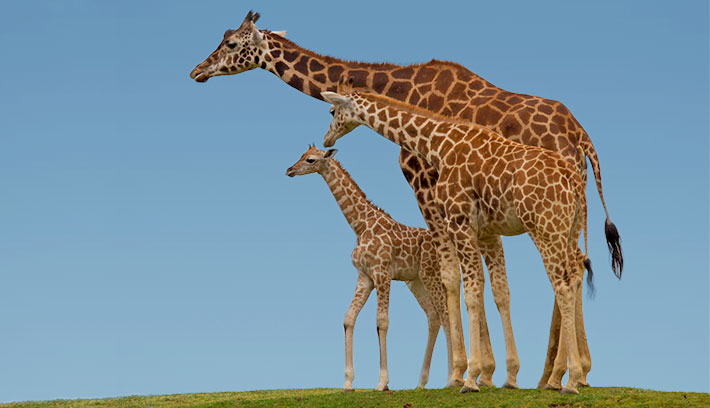Scientists have recently identified four separate species of giraffe in Africa, of which some are currently in danger. The new findings might help understand how little is known about the world’s tallest animals and their needs for preservation.
A study published Thursday in the journal Current Biology explained the recent findings regarding these four species of animals: The Southern giraffe, the Masai giraffe, the reticulated giraffe and the northern giraffe. Researchers weren’t expecting to find different types of giraffes while performing the study, in fact, they were just analyzing the animal’s DNA to understand better how they breed and their living situations. Researchers previously believed that there were only one species of giraffe that divided into sub-species and that the mammals differentiated from each other for their physical appearance.

“We were very surprised ourselves. We didn’t expect to find species,” said Axel Janke, one of the study’s authors and a professor at the Senckenberg Biodiversity and Climate Research Centre in Germany.
Researchers explained that the animals are so diverse, they can even be compared to species of bears and the differences between a polar and a black bear or the differences between types of sharks.
There are four different species of giraffes in the world
The Giraffa camelopardalis is a mammal that originates from Africa, so far it has been considered the world’s largest animal and its name comes from the similarities it has with camels and the skin of a leopard.
Giraffes live in South Africa, North Africa and in other locations such as the west of Somalia. They are animals who survive in extended locations known as savannahs and mainly feed off leaves, which make them herbivores.
These animals are very susceptible to predators in the savannahs. Lions, cameleopards, wild dogs and hyenas tend to chase giraffes to feed on them wich endangers their species survival.
For a long time, scientists have been studying the species breeding and populations to avoid their extinction. Currently, the animals are located as a “least concern” animal at the International Union for Conservation of Nature (IUCN).

Giraffe population has declined 40 percent in the last 15 years to 80,000 individuals. This numbers have made conservationists ask for a re-localization of the species situation at the IUCN list and consider them as an endangered species.
The latest research was a result of that extinction concern. Five years ago, co-author Axel Janke talked with the co-founder and director of the Giraffe Conservation Foundation located in Namibia, Julian Fennessy.
Fennessy wanted to understand the genetic behind giraffes since he wanted to relocate a certain number of giraffes because of conservation methods but was worried about the outcome these actions could have on their genetic levels and breeding circumstances.
Researchers took the samples of over 190 animals using tissue darts that are shot at the giraffes and then fall to the floor, to collect information, as The Verge reports. Scientists analyzed two parts of the species’ DNA.

First, researchers looked at what is called “mitochondrial DNA” which is the part of the DNA that the mother passes down to the child, they also analyzed plain simple DNA for the study.
Researchers were shocked to find out that giraffes were in fact completely different from one another, and there were four different types of species in the findings. The most shocking surprise was that the species lived together but didn’t breed with one another unless they were genetic their peers.
Findings concluded that the physical differences between giraffes also stand for their genetic differences. For example, the Masai giraffe has darker skin and patches located at different positions in the body, while others have different patches and lighter skin.
Not only the research discovered different types of species, but also helped the science world understand the importance of their preservation. According to the study, there are only 4,750 northern giraffes and 8,700 reticulated giraffes left in the world, which makes them extremely endangered species.
Source: The Verge
